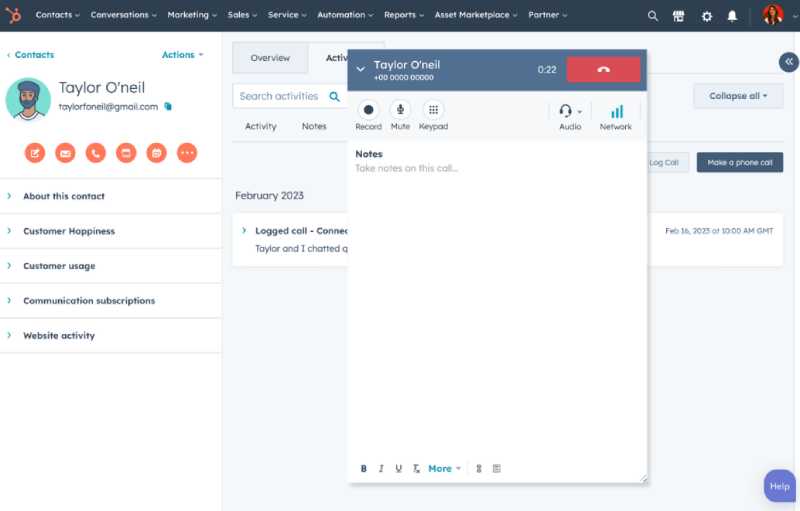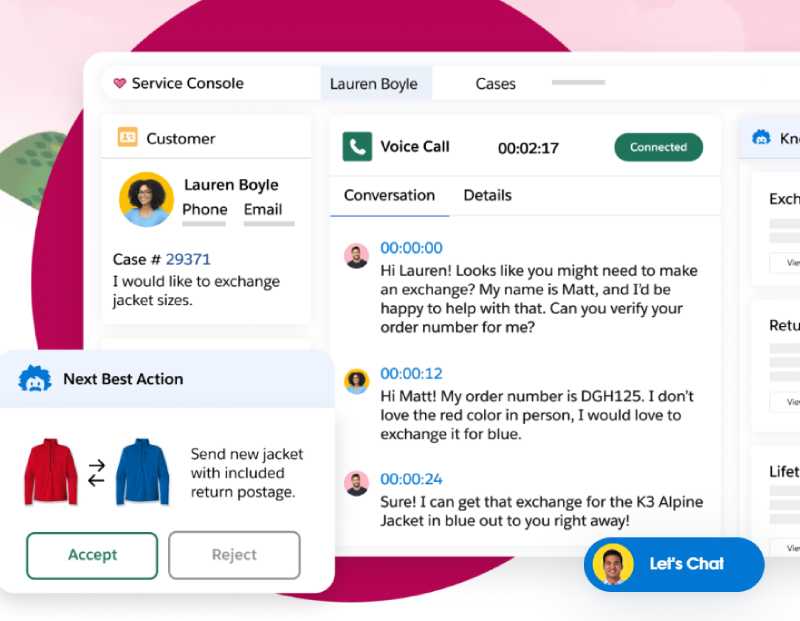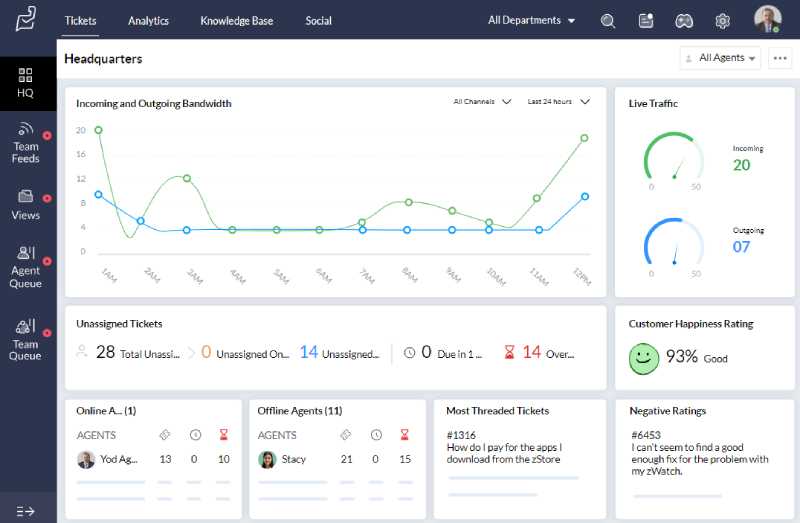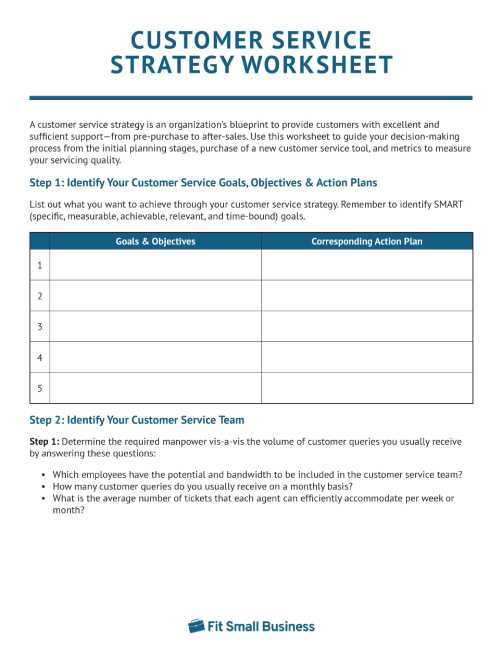When creating a customer service strategy, the first step is to set goals and objectives or determine what you want to attain with your service efforts. The next step is to build and train your customer service team to equip them with the right knowledge and skills. Identifying your customer service touchpoints and choosing your service software then follow. Also, you must create a resource for customer service information and monitor service quality regularly.
In this guide, we break down the six essential steps of how to craft a sound customer support strategy.

Step 1: Set Goals & Objectives for Your Customer Service Strategy
A crucial first step in creating effective customer service strategies is deciding what you want to achieve with your service efforts. While the overall objective of maintaining excellent customer service is to improve your relationship with your customers and increase retention, there are specific areas you need to identify. These may include the turnaround time agents resolve customers’ concerns, customer retention rate, and the utilization of helpful resources.
Understanding these areas helps you determine your success metrics and continuously improve your servicing quality. Below are goals and corresponding plans of action that you can aim to achieve with your customer support activities:
Goals | Action Plan |
|---|---|
Improve Turnaround Time | Determine the needed number of customer service agents based on the average number of tickets received per month to ensure they have enough time to resolve cases promptly. For example, if your company receives an average of 100 queries per month and you can assign one rep to handle 50 tickets each—you need at least two agents. |
Increase Year-over-year Customer Retention Rate | Send regular customer feedback forms to gather customers’ comments and suggestions for improvement. This gives you helpful insights to improve your products and services and shows your customers you value their opinion. |
Encourage Self-service Through Helpful Resources | Create a library of resources to optimize your agents’ time and only reserve human interactions for more complicated cases. For common questions, create an information toolkit that includes informational resources, such as a frequently asked questions (FAQ) page, webinars, articles, and recorded tutorial videos. |
Step 2: Build & Train Your Customer Service Team
Providing quality customer service entails effort and dedication. In most cases, you need a dedicated customer service team, unless you run a micro-business that only processes a small volume of customer tickets. That way, you can develop an effective customer service management strategy for all types of customer service issues, from general product inquiries and order tracking to ticket follow-ups and service calls.
The size of your customer service team largely depends on the size of your business. Small businesses may only need one or two agents who report to a customer service manager. For larger businesses, a full-service department may be necessary to satisfy customer expectations. Regardless of your size, having an adequate number of team members ensures you can properly process all tickets in a timely manner.
Below are some of the most common members of a customer service team for small businesses:
- Customer service agents: Your customer service team’s front line and the ones dealing with customers and working on case resolutions
- Customer service manager: Oversees a team of agents and is typically responsible for formulating customer service training ideas, and steps in when cases need to be escalated to someone with seniority
- Technical support agents: Agents with a more technical role such as troubleshooting or diagnosing customer issues
- Customer success manager: Establishes long-term relationships with customers by rolling out activities that nurture your relationship with them
- Customer experience manager: Oversees customer service touchpoints and comes up with solutions on how to improve customers’ experience every time they interact with your company
Step 3: Identify Your Customer Service Touch Points
After determining your objectives, as well as the team members who will make up your team, determine which channels you want to use to communicate with your customers. Factors to consider when identifying your customer service touchpoints include the size of your team, their familiarity with using each tool, and your budget.
While it is ideal to have an omnichannel approach to help customers easily reach you on any platform, be mindful of your bandwidth and only activate channels you can maintain. For example, if you only have two members in your team who can work on customer service tickets, only choose one or two channels, like email or live chat. It’s not advisable to also activate a social media messenger if you won’t be able to check it and respond to customers regularly.
Step 4: Select Your Customer Service Software
There are many types of customer service tools available in the market that you can choose from. You can also combine or integrate them with your other sales tools to streamline your sales operations. Below, we list the most common channels you can use:
- Help desk and ticketing: This tool centralizes and collates all customer queries in one place. After an official ticket is raised, an agent can follow up with the customer to resolve the issue.
- Live chat: This customer service tool enables customers to get assistance in real time by starting a conversation through a live chat widget. This also allows agents to provide immediate assistance to customers by pulling the required information.
- Chatbots: Similar to live chat but are run by chat robots, chatbots simulate human conversations by answering common questions to reduce human interaction with agents. Response workflows are usually designed to lead customers to information or answers they need.
- Shared inboxes: These inboxes help expedite case resolutions as multiple team members have access to a shared inbox. When an email comes in, any readily available agent can respond. Email templates are also available for canned responses.
- Social media messengers: In our digital age, many customers automatically search for a business or a brand’s social media page before their actual website. The most common channels are Facebook Messenger, Instagram, Twitter, and WhatsApp.
- In-app phone: This tool allows agents to make calls straight from their desktop while having access to all pertinent customer information, such as purchase history and personal profile.
- Customer relationship management (CRM) software: Some CRM solutions, such as HubSpot CRM and Freshsales, offer customer service communication channels, including an in-app phone, email, live chat, and chatbots.
A good example of a CRM is Freshdesk, which is equipped with an artificial intelligence (AI)-powered rephrase feature that helps improve support quality responses. On the other hand, HubSpot Service Hub allows sales agents to call customers directly via the app. Here are some samples of what these tools look like in actual customer service tools:
Once you’ve identified the channels you want your customers to reach you through, it’s easier to narrow down the customer service software you’ll use to centralize your servicing activities. Some software has a single functionality, while others offer an omnichannel and integrated communications approach. Below, we share the most popular customer service software and the communication channels that they offer.
Small Business Customer Service Software | Best Use Case | Starting Price* |
|---|---|---|
Best option for users wanting an all-in-one customer service management solution, including a help desk, live chat, email, and ticketing | Free plan + paid plans start at $15/user/month | |
 | Ideal for those who need customer service software natively integrated with a CRM system | $29/user/month |
 | Best for customer service teams that need artificial intelligence (AI) tools | Free plan + paid plans start at $14/user/month |
Excellent choice for teams that need robust automation tools for streamlining customer service needs | $26/user/month | |
 | Best for users who need to make voice-over-internet-protocol (VoIP) calls directly from the app | Free plan + paid plans start at $18/month/2 users |
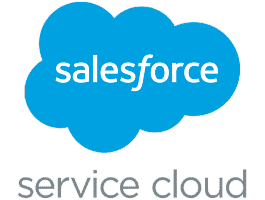 | Great option for businesses that utilize social media as a key customer service platform | $25/user/month |
 | Solid choice for users who want tools to enrich their customer profiles to deliver highly personalized support to clients | $55/user/month |
*Based on annual pricing.
For a closer look at the features, strengths, and weaknesses of each provider mentioned above, read our guide to the best customer service software for small businesses. This will help you develop the best customer support strategy for your business.
Step 5: Create Customer Service Information Resources
While having actual humans answer your customers is nice, keeping a repository of information your customers can refer to on their own helps your team save valuable time and resources. Below are customer service strategy examples of informational resources you can put up on your website so it’s easy for your customers to find answers and information independently.
- Frequently asked questions (FAQ): A collection of common questions clients usually ask. These may include general product information and return or exchange policies.
- Informative articles: These could be blog articles that elaborate on how to maximize the use of your product. A solid example is this article from HubSpot CRM that discusses sales territory planning to underscore the importance of their product offering.
- Recorded product demos and webinars: Instructional videos that discuss the benefits and usage of your solutions, saving your agents time from doing live demonstrations themselves.
Step 6: Regularly Monitor Your Customer Service Quality
Improving the quality of your customer service is a continual process, and it is crucial that you regularly evaluate its effectiveness. Doing so ensures that you’re giving your customers the highest servicing quality possible. There are many ways you can measure your customer support quality:
- Customer satisfaction score (CSAT): Rates quality of service with a customer satisfaction survey regarding the support they received after having their case resolved
- Net promoter score (NPS): Measures the likelihood of customers to recommend your business to their peers
- Support and call abandonment: Determines the average number of users who drop out of your calls or queues while waiting for their case to be resolved
- Social media sentiments: Reflects customers’ sentiments toward your business based on the tonality of their posts on various social media channels or the effectiveness of a social media strategy for customer service
- Resolution and rate duration: Shows the average number of cases you can resolve in a given period of time, as well as the average duration of a case—from ticketing to closing
- Customer churn and retention rate: Provides visibility on the reasons why customers continue to support you or why they abandoned your business for other options
Free Customer Service Strategy Worksheet
As you’re creating a customer service strategy, download our free worksheet and use it to take notes while you follow the six steps above. It will help you list the considerations and requirements to craft a sound customer service plan and strategy for your business.
Frequently Asked Questions
One of the best strategies for customer service is leveraging the right technology, such as a customer service software, to help reps determine which channels to choose to communicate with customers. It’s also crucial to monitor relevant metrics like net promoter score or customer satisfaction rating to ensure you provide your customers with excellent quality service.
The six core principles of a successful customer service strategy include the following: putting yourself in the customer’s shoes (empathetic), making follow-ups accordingly (consistent), responding quickly (responsive), treating customers as individuals (humane), not over-compromising (considerate), and asking for feedback (objective).
A good example of a customer-based strategy is regularly evaluating the effectiveness of your customer service to give your customers the highest service quality possible. You can measure your team’s customer support quality in terms of customer satisfaction score (CSAT), net promoter score (NPS), call abandonment rates, social media sentiments, resolution and rate duration, and customer retention rates.
Bottom Line
Creating a customer service strategy is a critical aspect of business operations. Setting the right goals and metrics for creating and evaluating a customer service management strategy can be enhanced by choosing the right customer service software. This helps you build a well-trained customer service team and ensure the regular assessment of your servicing quality so customers remain loyal to your business.

